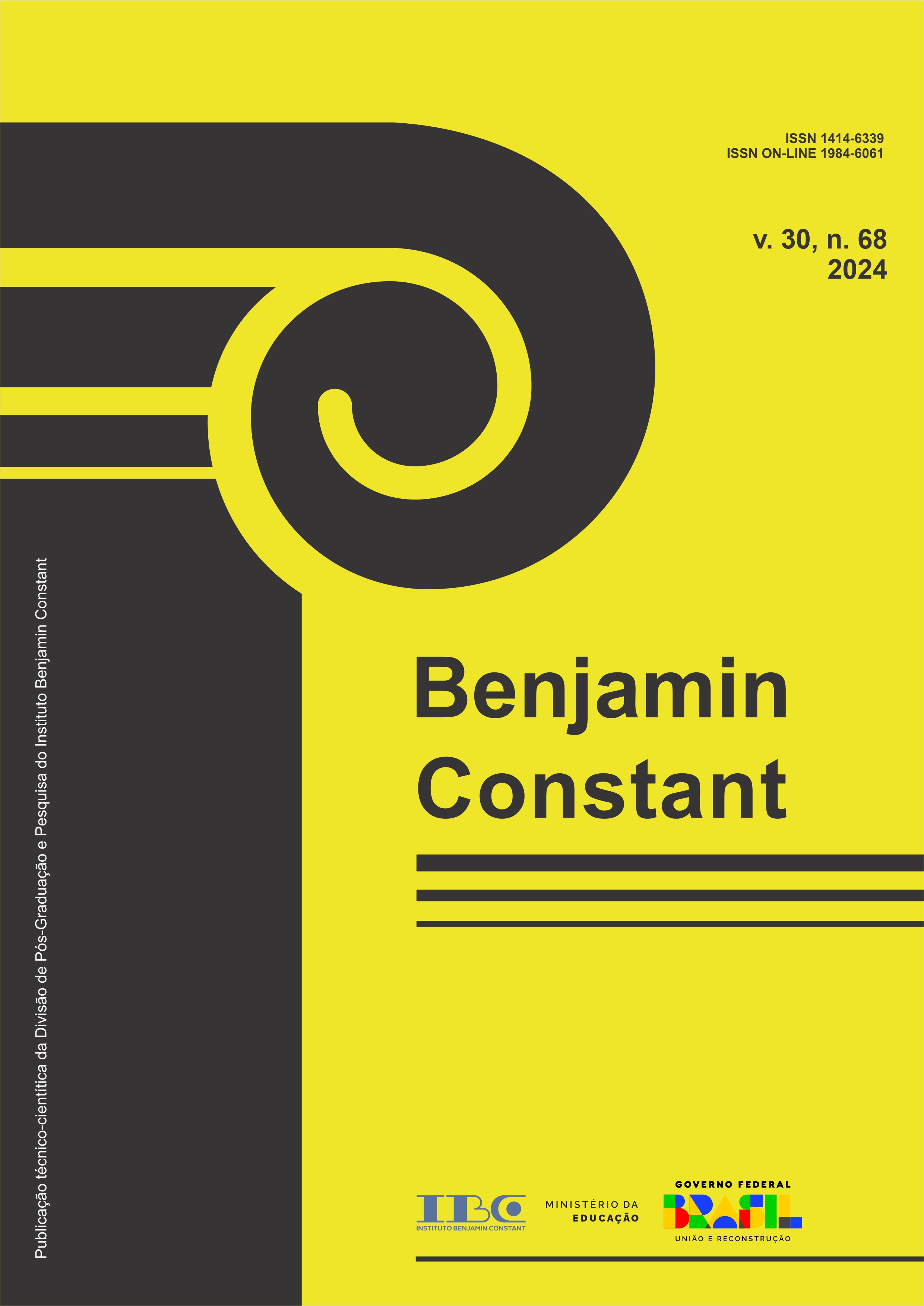Tactile floor plan puzzle: an assistive tecnhology resource for visually impaired students
Abstract
Orientation and Mobility (OM) is extremely important for visually impaired students to develop skills and techniques that allow them better access to their independence. Through OM, the student can learn to move around safely and independently, not only within known environments, but also in unfamiliar environments. For this purpose, the vast list of assistive technology products grows every day as needs are perceived around the world. In order to compose this list, three boards that form a set of puzzles were developed. In addition to this set, a guide was also developed containing the step by step that teaches how to replicate the game for its application in other spaces, working on the players (students) with their mental maps, being used in the Orientation and Mobility discipline, with the monitoring of a professional seer who knows the physical space of the game. Developed to be easily replicated, with low financial cost, the game can be applied preferably to children over ten years old (students), with no maximum age limit, and can be played by young people, adults and seniors who attend the Institute’s rehabilitation Benjamin Constant. To validate
the educational product produced, the three boards were applied as a game for two reviewers and three students, all visually impaired and of legal age, who attend the IBC. Semi-structured interviews and participant observation were used as data collection instruments. Data processing was carried out using the IRAMUTEQ software and its analysis resulted in different categories and subcategories. The material was approved by all the subjects involved in the research. The materials produced will be donated to the IBC for use by the Orientation and Mobility professors, and it is hoped that the material will be ready for application in the daily life of the Institute to facilitate the perception of spaces by people with visual impairment. We also emphasize that the production steps of the educational product of this research can be easily applied to any physical space in the most diverse places and institutions.
References
ALMEIDA, Maria da Glória de Souza; MENDES, Elcy Maria Andrade. Orientação e Mobilidade: a construção de novas trajetórias. In: GEPOM. Grupo de Estudos e Pesquisa em Orientação e Mobilidade. Rompendo barreiras: guia prático de orientação e mobilidade do Instituto Benjamin Constant. Rio de Janeiro: Instituto Benjamin Constant, 2022. p. 111-124.
BARDIN, Laurence. Análise de Conteúdo. Lisboa: Edições 70, 2015.
GEPOM. Grupo de Estudos e Pesquisa em Orientação e Mobilidade. Rompendo barreiras: guia prático de orientação e mobilidade do Instituto Benjamin Constant. Rio de Janeiro: Instituto Benjamin Constant, 2022.
GOLIN, Geisa et al. Mapas mentais de deficientes visuais como suporte ao design da informação urbana na Web. Revista Brasileira de Design da Informação, v. 6, n. 1, p. 15-25, 2009.
IBC. Instituto Benjamin Constant. Divisão de Reabilitação, Preparação para o Trabalho e Encaminhamento Profissional (DRT). In: IBC. Rio de Janeiro, 2021. Disponível em: https://www.gov.br/ibc/pt-br/composicao-1/departamentos-do-ibc/departamento-de-estudos-pesquisasmedicas-e-de-reabilitacao-dmr/drt/divisao-de-reabilitacao-preparacao-para-o-trabalho-eencaminhamento-profissional-drt. Acesso em: 17 jun. 2023.
MINAYO, Maria Cecília de Souza. Ciência, técnica e arte: o desafio da pesquisa social. In: MINAYO, Maria Cecília de Souza (org.). Pesquisa social: teoria, método e criatividade. 21. ed. Petrópolis: Editora Vozes, 2002. p. 9-29.
OMS. Organização Mundial da Saúde. Relatório mundial sobre a visão. Genebra: Organização Mundial da Saúde, 2019.
COSTA, Theo Duarte da et al. Percepção de profissionais de enfermagem acerca de segurança do paciente em unidades de terapia intensiva. Revista Gaúcha de Enfermagem, Porto Alegre, v. 37, n. 3, e61145, set. 2016. Disponível em: https://www.scielo.br/j/rgenf/a/KdhsFVVJ4tPJm6zJbSGghkj/?lang=pt. Acesso em: 29 mai. 2023.
SALVADOR, Pétala Tuani Candido de Oliveira et al. Percepções de profissionais de enfermagem acerca da integração do técnico de enfermagem na sistematização da assistência. Escola Anna Nery, Rio de Janeiro, v. 21, n. 2, e20170035, 2017. Disponível em: https://www.scielo.br/j/ean/a/C4G4qSDywB3PFZ3F3kxBvxF/?format=pdf. Acesso em: 29 mai. 2023.
VIEIRA, Luiza Padovam. Por que incentivar o uso do quebra-cabeça para as crianças? In: QUERO Educação. QueroBolsa. São Paulo, 26 fev. 2021. Disponível em: https://querobolsa.com.br/revista/por-que-incentivar-o-uso-do-quebra-cabeca-para-as-criancas. Acesso em: 15 jan. 2023.





.png)
